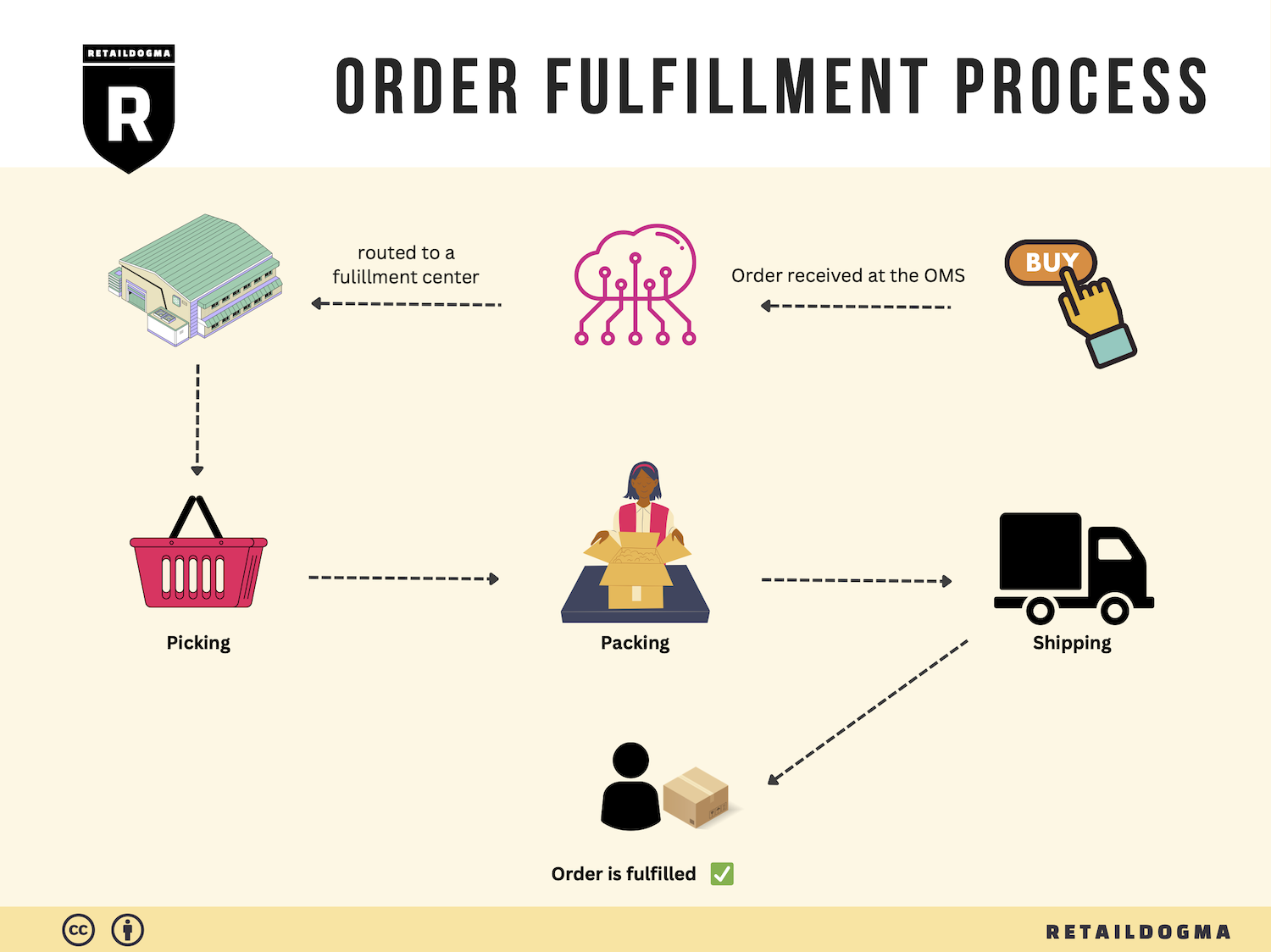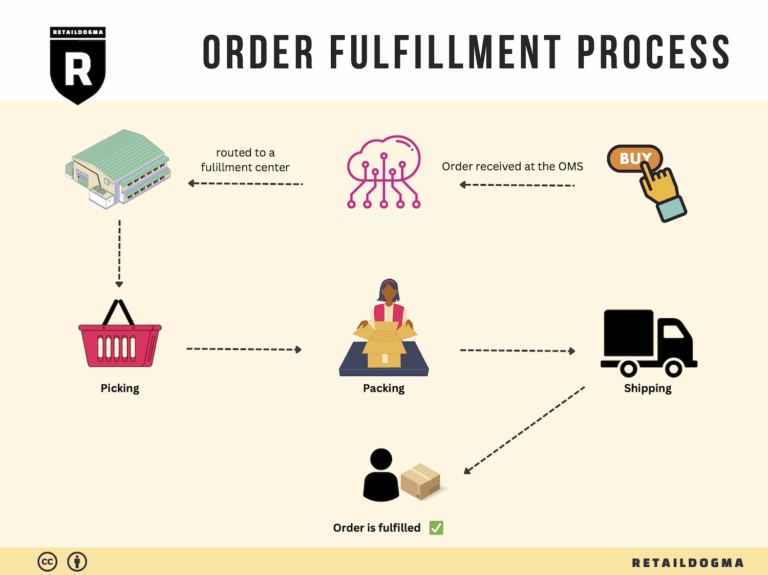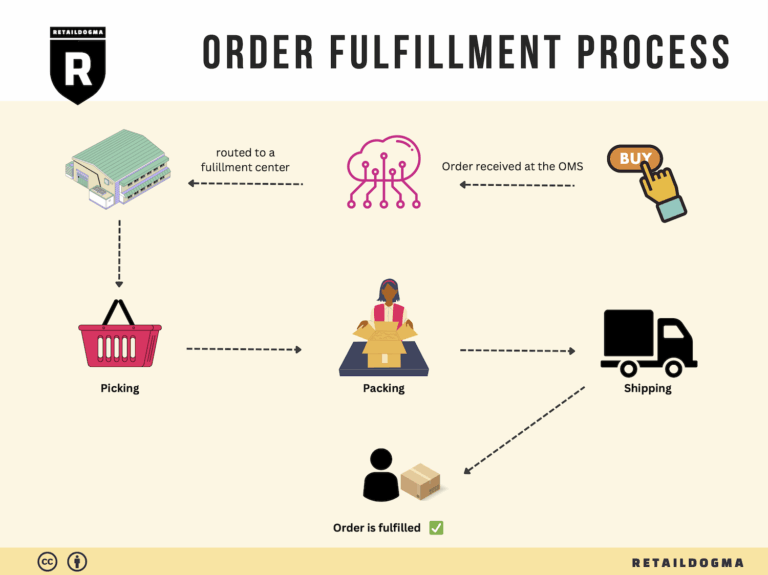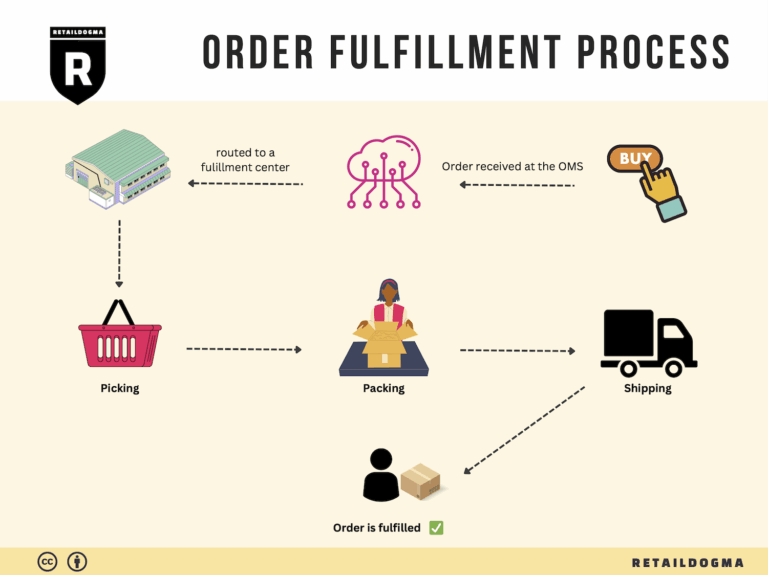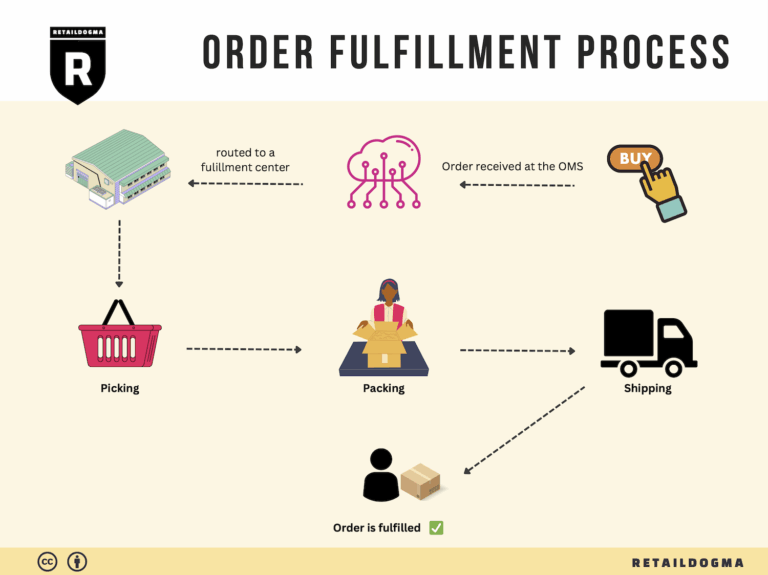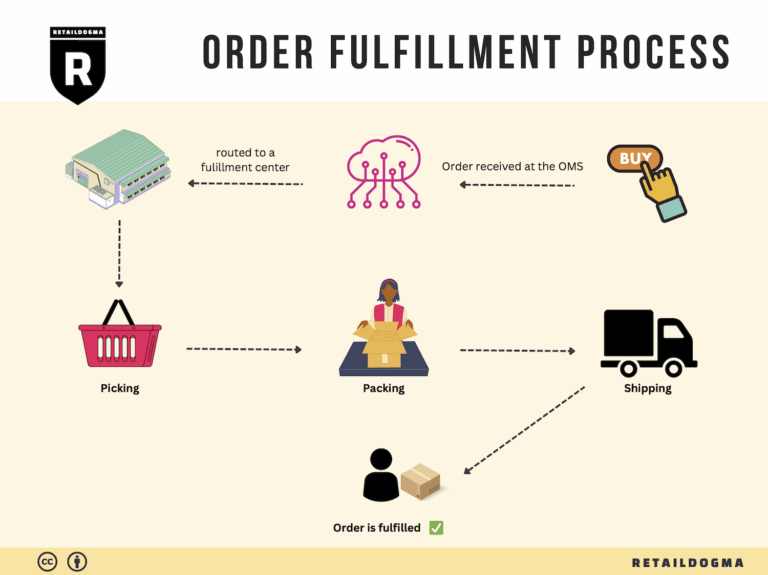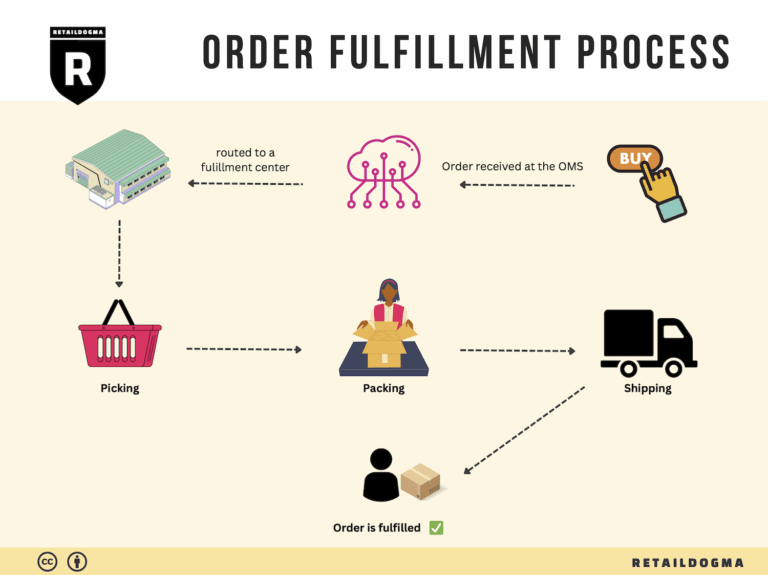Ecommerce Fulfillment Services: The Ultimate Guide (2025)
What is E-commerce Fulfillment? An Introduction for Growing Businesses
Understanding the Fulfillment Challenge
As your e-commerce business begins to scale, one common pain point emerges: the overwhelming task of packing and shipping orders. Initially, managing a handful of orders might feel manageable, but as sales grow, so does the complexity of logistics. This is where e-commerce fulfillment comes into play, serving as a critical backbone to your operations. Simply put, fulfillment is the process of getting a product from your warehouse or storage facility into the hands of your customers. It encompasses everything from receiving inventory, processing orders, picking and packing items, to shipping them out efficiently and accurately.
The Importance of Effective Fulfillment
An effective fulfillment strategy not only streamlines operations but also enhances customer satisfaction. In today’s fast-paced market, customers expect quick, accurate deliveries. A seamless fulfillment process can significantly impact your business’s reputation and bottom line. Whether you’re operating out of a small storage room or managing a large warehouse, understanding fulfillment options is vital for sustainable growth.
What This Guide Covers
This guide aims to demystify e-commerce fulfillment for growing businesses. We will explore various fulfillment models, including Third-Party Logistics (3PL) and Fulfillment by Amazon (FBA), helping you understand the advantages and disadvantages of each. Additionally, we will delve into the core services provided by fulfillment partners, such as inventory management, order processing, and shipping options.
Choosing the right fulfillment partner can be daunting, especially with the myriad of options available. This guide will provide insights into what to look for in a partner, ensuring you select one that aligns with your business goals and customer expectations. Furthermore, we will discuss pricing structures commonly used in the industry, empowering you to make informed financial decisions as you scale.
Empowering Your Business
Ultimately, the goal of this guide is to empower e-commerce business owners, operations managers, and entrepreneurs with the knowledge needed to make smart decisions regarding their logistics. By understanding the fundamentals of e-commerce fulfillment, you can optimize your operations, enhance customer satisfaction, and position your business for long-term success. Whether you’re just beginning to explore fulfillment options or looking to refine your existing strategy, the insights provided will be invaluable on your journey to growth.
What You’ll Learn In This Guide
- What is E-commerce Fulfillment? An Introduction for Growing Businesses
- The Order Fulfillment Process: From ‘Buy’ Button to Customer’s Door
- Comparing Fulfillment Models: In-House vs. 3PL vs. Dropshipping
- A Deep Dive into Amazon FBA: Pros, Cons, and Who It’s For
- Core Services Offered by Fulfillment Centers
- How to Choose a Fulfillment Partner: A 6-Point Checklist
- Understanding Fulfillment Pricing: A Breakdown of Common Fees
- Frequently Asked Questions (FAQs) about Fulfillment
- Conclusion: Is Outsourcing Fulfillment the Right Move for Your Business?
- Important Disclaimer
The Order Fulfillment Process: From ‘Buy’ Button to Customer’s Door
1. Receiving Inventory
The first step in the order fulfillment process is receiving inventory. This step involves the delivery of goods from suppliers to the warehouse. Upon arrival, fulfillment associates inspect the merchandise to ensure that it matches the purchase order in terms of quantity and quality. They check for any damages or discrepancies, logging this information into the inventory management system.
Importance: Efficient receiving is crucial as it sets the foundation for the entire fulfillment process. Any errors at this stage can lead to stockouts, overstocking, or shipping incorrect items to customers, which can harm customer satisfaction and increase operational costs.
Key Term: SKU (Stock Keeping Unit) – A unique identifier assigned to each product, essential for tracking inventory throughout the fulfillment process.
2. Warehouse Storage
Once the inventory is received and verified, the next step is warehouse storage. This involves organizing the products in designated storage areas within the warehouse. Fulfillment associates categorize items based on their size, type, and demand, ensuring that frequently ordered items are easily accessible.
Importance: Proper storage is vital for maximizing space utilization and improving picking efficiency. A well-organized warehouse reduces the time required to locate and retrieve products, leading to faster order processing and enhanced operational efficiency.
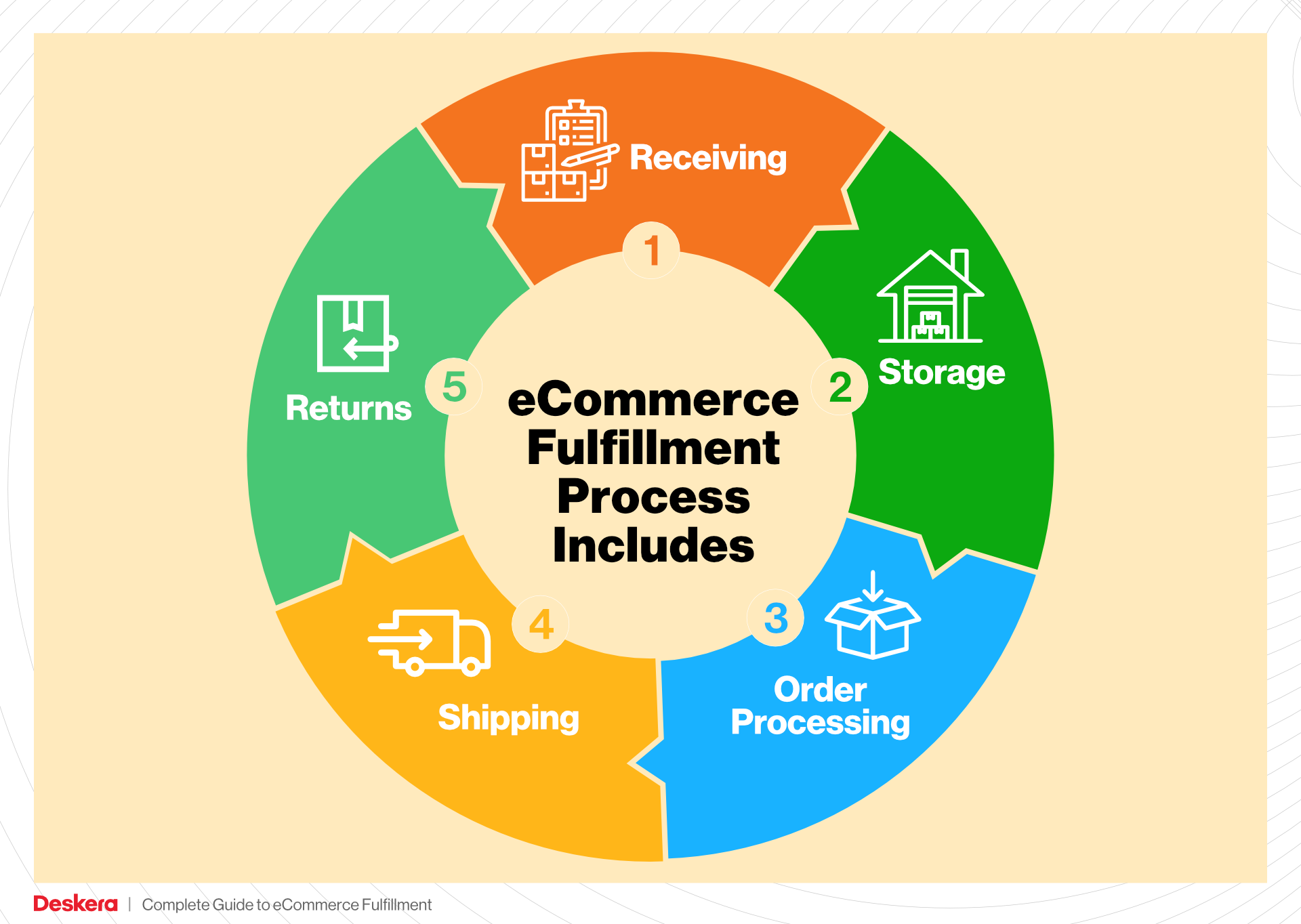
Key Term: FIFO (First In, First Out) – A method of inventory management where the oldest stock is sold first, minimizing the risk of obsolescence and spoilage.
3. Order Picking
Order picking is the process of retrieving items from their storage locations to fulfill customer orders. Fulfillment associates utilize pick lists generated by the inventory management system, which detail the items and quantities needed for each order. Depending on the warehouse layout and order volume, various picking methods can be employed, such as single order picking, batch picking, or zone picking.
Importance: The picking process directly impacts the speed and accuracy of order fulfillment. An efficient picking operation ensures that customers receive their correct orders on time, which is essential for maintaining high levels of customer satisfaction and loyalty.
Key Term: Pick List – A document or digital tool that outlines the items to be collected for fulfilling specific orders, guiding associates in the picking process.
4. Order Packing
After the items have been picked, they move to the packing stage. Fulfillment associates pack the products securely in boxes or envelopes, ensuring that they are protected during transit. This step often includes labeling packages with shipping information and including packing slips that detail the contents of the order.
Importance: Proper packing is critical to preventing damage during shipping and ensuring that the correct items are sent to customers. Well-packed orders reduce the likelihood of returns and enhance the overall customer experience.
Key Term: Packing Slip – A document included in the shipment that lists the items in the order, serving as a receipt for the customer and a reference for the fulfillment team.
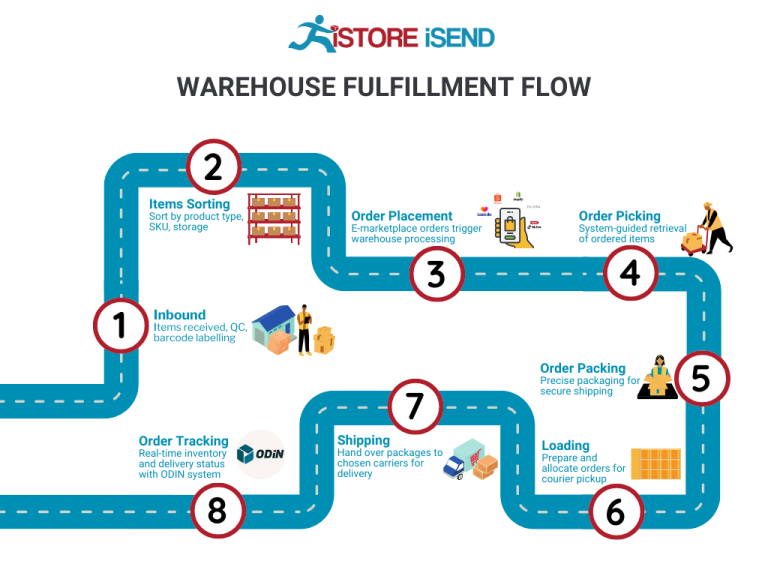
5. Shipping & Delivery
The final step in the order fulfillment process is shipping and delivery. Once packed, orders are transferred to shipping carriers for delivery to the customer’s specified address. Fulfillment associates must choose the appropriate shipping method based on factors like cost, speed, and customer preferences. They also track shipments to ensure timely delivery and handle any issues that may arise during transit.
Importance: The shipping stage is the last opportunity to create a positive impression on the customer. Efficient shipping processes lead to timely deliveries, which are critical for customer satisfaction and retention. Additionally, providing tracking information empowers customers to monitor their orders.
Key Term: Last Mile Delivery – The final step in the shipping process where the package is delivered from a transportation hub to the final destination, often considered the most critical aspect of the delivery experience.
In conclusion, understanding and optimizing each step of the order fulfillment process is essential for e-commerce businesses aiming to scale effectively. By focusing on efficiency, accuracy, and customer satisfaction throughout the fulfillment journey, businesses can foster loyalty and drive growth.
Comparing Fulfillment Models: In-House vs. 3PL vs. Dropshipping
Fulfillment Model Comparison
| Model | Who Handles Inventory | Best For (Business Stage) | Key Advantage | Key Disadvantage |
|---|---|---|---|---|
| In-House Fulfillment | The business itself | Startups and established brands | Complete control over inventory and process | High overhead costs and space requirements |
| Third-Party Logistics (3PL) | A third-party provider | Scaling businesses | Scalability and expertise in logistics | Less control over inventory management |
| Dropshipping | Supplier/manufacturer | New entrepreneurs and small businesses | Low upfront investment and risk | Potentially longer shipping times and quality control issues |
In-House Fulfillment
In-house fulfillment refers to a model where a business manages its own inventory and fulfillment processes entirely. This includes everything from receiving shipments and storing products to picking, packing, and shipping orders directly to customers. This model is particularly suited for startups and established brands that are looking to maintain a high level of control over their inventory and customer experience.
The key advantage of in-house fulfillment is the complete control it offers over the inventory and fulfillment process. Businesses can establish their own standards for quality, speed, and customer service, which can enhance customer satisfaction and loyalty. Additionally, having direct oversight of inventory helps in better managing stock levels and reducing the risk of stockouts or overstock situations.
However, there are significant disadvantages to consider. Maintaining an in-house fulfillment operation can lead to high overhead costs, including warehousing, staffing, and equipment. It also requires substantial space, which can be a constraint for small businesses. Furthermore, as the business scales, the complexities of managing fulfillment in-house can become overwhelming, leading to inefficiencies and potential service issues.
Third-Party Logistics (3PL)
Third-party logistics (3PL) involves outsourcing the storage, handling, and shipping of products to a specialized logistics provider. This model is particularly beneficial for businesses that are in a growth phase and need to scale their operations without the burden of managing logistics themselves.
One of the primary advantages of using a 3PL provider is scalability. As a business grows, a 3PL can adapt its services to meet increasing demand without the need for significant capital investment in infrastructure. Additionally, 3PL providers often have expertise in logistics and supply chain management, which can lead to improved efficiency and cost savings. They can also offer advanced technology solutions, such as inventory management systems and data analytics, which can help businesses make informed decisions.
However, outsourcing fulfillment to a 3PL also comes with its challenges. Businesses may experience a lack of control over their inventory and fulfillment processes, which can lead to inconsistencies in service quality. Additionally, communication issues can arise, particularly if the 3PL is located in a different region or country. Businesses also need to factor in the costs of 3PL services, which can vary widely depending on the provider and the specific services required.
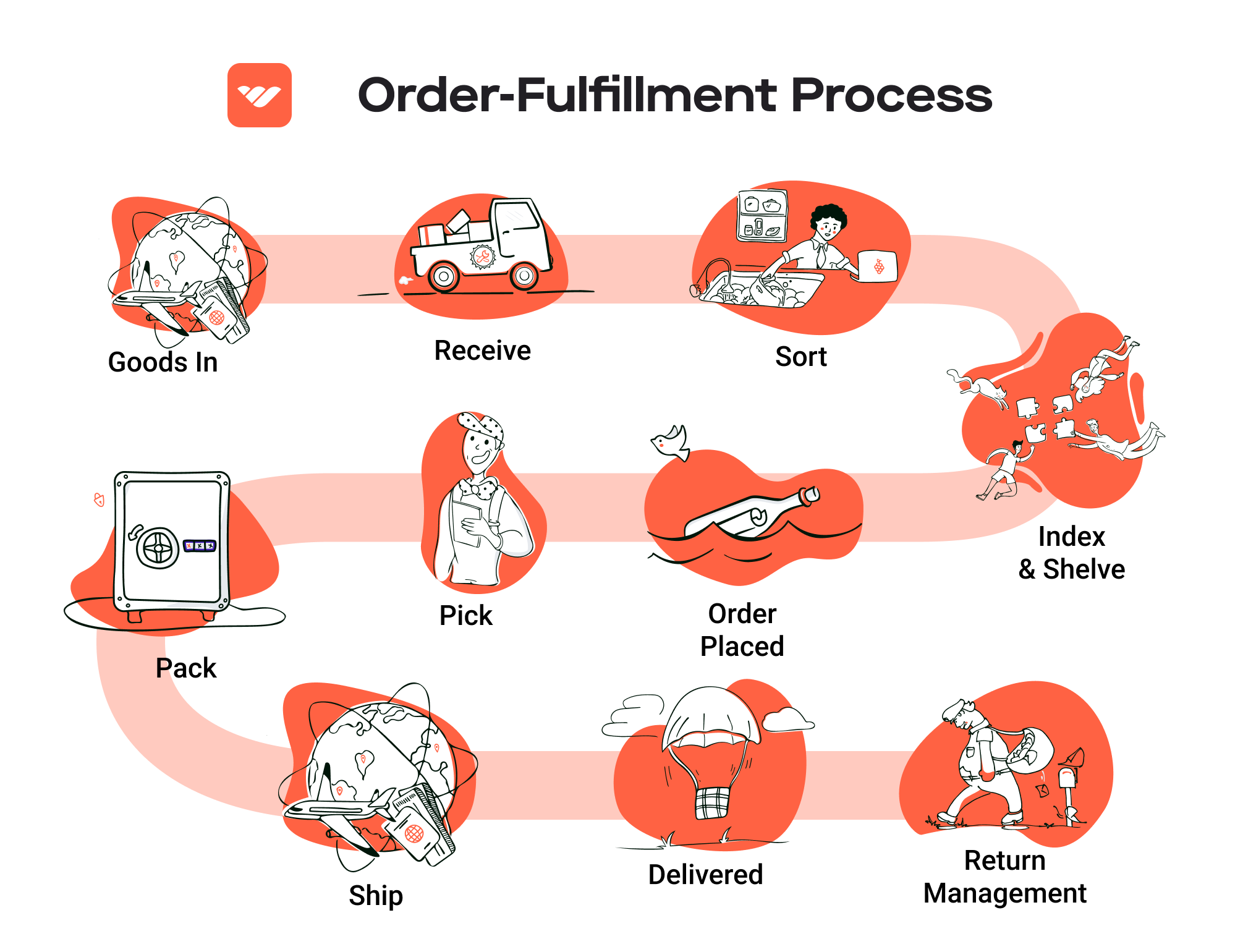
Dropshipping
Dropshipping is a fulfillment model where a business sells products without holding inventory. Instead, when a business receives an order, it purchases the item from a third-party supplier who then ships it directly to the customer. This model is particularly appealing for new entrepreneurs and small businesses looking to minimize their upfront investment and risk.
The key advantage of dropshipping is the low barrier to entry. Since there is no need to invest in inventory upfront, businesses can start selling with minimal financial risk. This model allows entrepreneurs to test new products and markets without significant capital commitment. Additionally, dropshipping eliminates the need for warehousing and fulfillment infrastructure, allowing businesses to focus on marketing and customer acquisition.
However, dropshipping also presents several disadvantages. One of the most significant challenges is the potential for longer shipping times, especially if the supplier is located overseas. This can lead to customer dissatisfaction and impact brand reputation. Additionally, since businesses do not have direct control over inventory, they may face issues with product availability and quality. There is also the risk of supplier errors, which can result in shipping mistakes and returns, further complicating the customer experience.
Conclusion
Choosing the right fulfillment model is critical for e-commerce businesses looking to scale effectively. In-house fulfillment offers control but comes with high costs and space requirements. Third-party logistics provide scalability and expertise, albeit with some loss of control. Dropshipping presents a low-risk entry point for new businesses, but it can lead to challenges in shipping times and product quality. Each model has its unique advantages and disadvantages, and the best choice depends on the specific needs, goals, and resources of the business.
A Deep Dive into Amazon FBA: Pros, Cons, and Who It’s For
Understanding Fulfillment by Amazon (FBA)
Fulfillment by Amazon (FBA) is a service provided by Amazon that allows e-commerce sellers to store their products in Amazon’s fulfillment centers. Amazon takes care of storage, packaging, and shipping of the products, as well as customer service and returns. This service is designed to simplify the logistics of selling online, enabling sellers to reach a vast customer base while leveraging Amazon’s infrastructure.
How FBA Works
When a seller enrolls in FBA, they send their products to Amazon’s warehouses. Once the products are received, they become available for sale on Amazon’s platform. The process is as follows:
-
Product Preparation: Sellers must prepare their products according to Amazon’s guidelines, which include labeling and packaging requirements.
-
Shipping to Amazon: Sellers create a shipment plan in their Amazon Seller Central account, specifying which products they will send and the fulfillment center they will ship to.
-
Storage: Once the products arrive at the fulfillment center, they are stored until an order is placed. Amazon manages inventory levels and storage space.
-
Order Processing: When a customer places an order, Amazon picks, packs, and ships the product. The seller does not need to be involved in this process.
-
Customer Service: Amazon handles all customer inquiries and returns, allowing sellers to focus on growing their business.
-
Payment: After the sale, Amazon deposits the earnings (minus fees) into the seller’s account.
Pros of Using Amazon FBA
-
Prime Eligibility: Products fulfilled by Amazon are automatically eligible for Amazon Prime. This means that sellers can offer their products to millions of Prime members who prefer fast, free shipping. This can significantly increase sales potential.
-
Customer Trust: Amazon has built a strong reputation for reliability and customer service. By using FBA, sellers can leverage this trust, as products sold through Amazon are often viewed as more credible and reliable.
-
Multi-Channel Fulfillment: FBA allows sellers to fulfill orders from other sales channels, not just Amazon. This means that if a seller has a website or sells on platforms like eBay or Walmart, they can use Amazon’s fulfillment services for those orders as well, streamlining their logistics.
-
Scalability: FBA enables sellers to scale their operations without needing to invest in warehousing, logistics, or customer service infrastructure. As sales increase, Amazon can accommodate the growth without the seller needing to manage additional resources.
-
Focus on Core Business: With Amazon handling storage, shipping, and customer service, sellers can focus on marketing, product development, and other core business activities, improving overall efficiency.
Cons of Using Amazon FBA
-
High Fees: While FBA provides many conveniences, it comes with fees that can eat into profits. These include storage fees, fulfillment fees, and additional costs for returns and long-term storage. Sellers must carefully analyze their pricing strategies to ensure profitability.
-
Strict Inventory Rules: Amazon has stringent rules regarding inventory management, including limitations on storage space and requirements for inventory performance metrics. Failure to adhere to these rules can result in additional fees or even account suspension.
-
Commingling Risks: FBA products may be commingled with products from other sellers. This means that if a customer receives a defective or damaged product, it can be challenging to trace the issue back to the original seller. This risk can affect brand reputation and customer satisfaction.
-
Less Control Over Branding: When using FBA, sellers have less control over how their products are presented and packaged. Amazon’s standard packaging may not align with a seller’s branding strategy, which can dilute brand identity.
-
Inventory Management Challenges: While Amazon’s systems streamline logistics, managing inventory levels can become complex. Sellers must keep track of stock levels across multiple channels and anticipate demand accurately to avoid stockouts or excess inventory.
Who is FBA Best For?
Fulfillment by Amazon is particularly beneficial for:
-
New Sellers: Entrepreneurs who are just starting in e-commerce can take advantage of Amazon’s established platform and customer base without the upfront investment in warehousing and logistics.
-
Sellers with High Sales Volume: Businesses that experience high sales volume or seasonal spikes can benefit from Amazon’s ability to scale quickly without additional overhead.
-
Sellers of Low-Margin Products: For sellers offering low-margin items, FBA can help increase sales volume through Prime eligibility, offsetting the costs associated with higher fees.
-
Brands Looking to Expand Reach: Established brands looking to leverage Amazon’s marketplace and reach a wider audience can use FBA to enhance their distribution strategy without managing the logistics directly.
-
Busy Entrepreneurs: Business owners who prefer to focus on marketing and product development rather than logistics will find FBA particularly appealing, as it allows them to outsource fulfillment and customer service.
In conclusion, while Fulfillment by Amazon offers significant advantages for scaling e-commerce businesses, it also comes with challenges that sellers must navigate. A thorough understanding of both the pros and cons is essential for making an informed decision about whether FBA aligns with business goals and operational strategies.
Core Services Offered by Fulfillment Centers
Inventory Management & Warehousing
Inventory management is a critical function of fulfillment centers, involving the systematic tracking and organization of products stored within a warehouse. Fulfillment centers utilize advanced inventory management systems (IMS) to maintain real-time visibility of stock levels, manage replenishment, and optimize storage space.
The benefits of effective inventory management are manifold. For e-commerce businesses, it ensures that products are readily available to meet customer demand, thereby reducing the risk of stockouts and lost sales. Additionally, by maintaining accurate inventory records, businesses can avoid overstock situations that tie up capital in unsold goods. Efficient warehousing practices also contribute to improved order accuracy, as fulfillment associates can quickly locate and retrieve items when processing orders. Ultimately, a well-organized inventory management system enhances operational efficiency, leading to faster order fulfillment and increased customer satisfaction.
Pick and Pack Services
Pick and pack services are integral to the order fulfillment process, where fulfillment centers efficiently gather items from inventory (picking) and prepare them for shipment (packing). This service involves several steps: receiving customer orders, locating the products within the warehouse, and packaging them securely for delivery.
For e-commerce businesses, the pick and pack process offers significant advantages. First, it streamlines the order fulfillment workflow, allowing companies to process orders quickly and accurately. A fulfillment center’s trained associates use various tools and technologies to ensure that items are picked according to customer specifications, minimizing errors. Moreover, efficient packing practices—such as using appropriate packaging materials and methods—reduce shipping costs and enhance the overall customer experience. By outsourcing pick and pack services, businesses can focus on core activities like marketing and product development while ensuring their customers receive their orders promptly.
Kitting and Assembly
Kitting and assembly services involve the grouping of individual items into ready-to-sell kits or the assembly of components into final products. This service is particularly beneficial for e-commerce businesses that offer bundled products or require complex assembly before shipping. Fulfillment centers can handle kitting tasks, such as assembling promotional packages, gift sets, or multi-item orders.
The primary advantage of kitting and assembly is that it allows e-commerce businesses to offer customers unique product combinations and increase sales through bundled offerings. By outsourcing these tasks to fulfillment centers, businesses can reduce labor costs and minimize the risk of errors associated with in-house assembly. Additionally, kitting can lead to faster shipping times, as products are pre-packaged and ready for delivery. This service not only enhances operational efficiency but also improves the customer shopping experience by providing convenient and attractive product options.
Returns Management (Reverse Logistics)
Returns management, often referred to as reverse logistics, is the process of handling returned products from customers. This service includes the return authorization process, inspecting returned items, restocking, and managing the disposition of unsellable goods. Effective returns management is crucial for maintaining customer satisfaction and loyalty, as a streamlined process can significantly impact a customer’s perception of a brand.
For e-commerce businesses, a well-managed returns process offers several benefits. First, it helps to minimize the financial impact of returns by ensuring that items are quickly processed and restocked, allowing for potential resale. Furthermore, a smooth returns experience can enhance customer trust and encourage repeat purchases, as customers are more likely to shop with businesses that offer hassle-free return policies. Fulfillment centers often utilize data analytics to identify trends in returns, providing valuable insights that can help businesses improve product offerings and reduce future returns.
In summary, by leveraging the core services offered by fulfillment centers—inventory management and warehousing, pick and pack services, kitting and assembly, and returns management—e-commerce businesses can optimize their operations, enhance customer satisfaction, and ultimately scale their sales effectively. These services not only improve efficiency but also allow business owners to focus on strategic growth initiatives, positioning their brands for long-term success in a competitive marketplace.
How to Choose a Fulfillment Partner: A 6-Point Checklist
Location & Warehouse Network
When selecting a fulfillment partner, the geographical location of their warehouses plays a critical role in your logistics efficiency. A strategically located warehouse can significantly reduce shipping times and costs, which directly impacts customer satisfaction.
Key Questions to Ask:
– Where are your warehouses located, and how does that align with our target market?
– Do you have multiple warehouse locations to optimize shipping times?
– How do you handle last-mile delivery in different regions?
Understanding the partner’s warehouse network can help ensure timely deliveries and cost-effective shipping solutions. It’s also essential to consider the partner’s ability to scale into new regions as your business grows.
Technology & Integrations
In today’s digital age, the technology your fulfillment partner uses is paramount. Efficient order processing, inventory management, and real-time tracking are all facilitated by advanced technology. Moreover, seamless integration with your existing e-commerce platforms can streamline operations significantly.
Key Questions to Ask:
– What technology platform do you use for order processing and inventory management?
– How easily can your system integrate with our existing e-commerce platforms (e.g., Shopify, WooCommerce)?
– Do you offer real-time tracking capabilities for both us and our customers?
Choosing a partner with robust technology solutions can enhance operational efficiency and provide transparency throughout the supply chain, ultimately improving customer experience.
Specializations (e.g., Cold Storage, Oversized Items)
Different businesses have unique needs based on their product types. If you deal with specialized products such as perishables requiring cold storage or oversized items, ensure that your fulfillment partner has the necessary capabilities.
Key Questions to Ask:
– Do you have specialized facilities for cold storage or handling oversized items?
– What safety and compliance measures do you have in place for sensitive products?
– Can you accommodate seasonal fluctuations in inventory for specialized products?
Identifying a partner with the right specializations ensures that your products are stored, handled, and shipped according to the required standards, mitigating risks associated with product spoilage or damage.
Scalability & Capacity
As your business grows, your fulfillment needs will evolve. It’s crucial to choose a partner that can scale alongside your business. This includes their ability to handle increased order volumes, seasonal spikes, and new product lines.
Key Questions to Ask:
– What is your current capacity, and how have you managed scalability in the past?
– How do you handle peak seasons or unexpected surges in order volume?
– Are there limits on the types of products you can store or ship?
A partner that demonstrates scalability will not only accommodate your current needs but will also position you well for future growth, minimizing potential disruptions in service.
Pricing and Contracts
Understanding the pricing structure and contract terms is fundamental to maintaining healthy cash flow and profitability. Hidden fees can significantly impact your bottom line, so clarity is essential.
Key Questions to Ask:
– Can you provide a detailed breakdown of your pricing model (e.g., storage fees, shipping fees, pick-and-pack fees)?
– Are there any additional fees we should be aware of (e.g., for returns, special handling)?
– What are the contract terms, and is there flexibility for adjustments as our business changes?
Having a clear understanding of costs helps in budgeting and financial planning, ensuring that the partnership remains financially viable as your business scales.
Customer Support & Reviews
A reliable fulfillment partner should provide excellent customer support. In the fast-paced world of e-commerce, issues can arise at any time, and timely support can prevent minor problems from escalating into significant disruptions.
Key Questions to Ask:
– What customer support channels do you offer (e.g., phone, email, chat)?
– What is your average response time for support inquiries?
– Can you provide references or reviews from other clients?
By evaluating a partner’s customer support and reputation, you can gauge their reliability and commitment to service, which is critical for maintaining your own business’s reputation.
Conclusion
Choosing the right fulfillment partner is a strategic decision that can significantly impact your e-commerce operations. By carefully considering factors such as location, technology, specializations, scalability, pricing, and customer support, you can make an informed choice that aligns with your business goals. Taking the time to conduct thorough due diligence will ultimately lead to a smoother fulfillment process, enhanced customer satisfaction, and sustainable growth for your e-commerce venture.
Understanding Fulfillment Pricing: A Breakdown of Common Fees
Initial Setup Fees
When beginning with a fulfillment service, businesses often encounter initial setup fees. These charges are incurred for establishing your account and configuring your systems to integrate with the fulfillment center’s operations. Setup fees can include costs for software integration, initial training sessions, and system configuration. The price typically ranges from a few hundred to several thousand dollars, depending on the complexity of your inventory management system and the level of customization required.
To calculate initial setup fees, consider factors such as the number of SKUs you will be managing, the need for unique packaging or branding, and any specific software integrations that may be necessary. It is advisable to discuss your needs with potential fulfillment partners to get a clear estimate of these costs upfront.
Receiving Fees
Receiving fees are charged when your inventory arrives at the fulfillment center. This fee covers the costs associated with unloading, inspecting, and storing your products. Typically, these fees are calculated based on the volume of goods received, measured in either weight or number of units.
For example, a fulfillment center may charge a flat rate per pallet or a fee per item, often ranging from $0.25 to $1.00 per unit. Some providers may also have minimum charges for small shipments, so it’s crucial to inquire about these details when comparing fulfillment services. Understanding the receiving fees can help you budget for incoming inventory more accurately.
Storage Fees (per pallet/bin)
Storage fees apply to the space your inventory occupies within the fulfillment center. These fees can be structured in various ways, but they are commonly calculated on a per-pallet or per-bin basis. Storage fees can range from $10 to $50 per pallet per month, depending on the location and the fulfillment center’s amenities.
It’s important to note that many fulfillment centers also impose long-term storage fees if your inventory remains unsold for an extended period (usually over 6 months). This fee is designed to encourage efficient inventory turnover. To manage storage fees effectively, keep a close watch on your inventory levels and sales velocity, and consider seasonal fluctuations in demand.
Pick & Pack Fees (per item/order)
Pick and pack fees are incurred each time an order is processed. This fee encompasses the picking of items from the shelves, packing them according to specifications, and preparing them for shipment. Typically, pick and pack fees are charged on a per-item or per-order basis, with costs ranging from $1 to $3 per item.
Some fulfillment centers may also offer tiered pricing, where the cost per item decreases as order volumes increase. To optimize your fulfillment costs, consider consolidating orders when possible, and discuss with your provider about volume discounts. Understanding the intricacies of pick and pack fees is essential for maintaining profitability, especially for businesses with high order frequencies.
Shipping Fees
Shipping fees can be one of the most significant costs associated with fulfillment. These fees are determined by various factors, including the weight and dimensions of the package, the shipping method selected (standard, expedited, etc.), and the destination of the shipment. Fulfillment centers often negotiate shipping rates with carriers, which can lead to savings for businesses.
Shipping fees can be calculated using a dimensional weight formula or actual weight, whichever is greater. Many fulfillment centers will provide you with estimated shipping costs based on your package specifications, allowing you to budget accordingly. Additionally, consider offering different shipping options to your customers to balance cost and delivery speed.
Tips for Getting an Accurate Quote
-
Be Transparent: Provide potential fulfillment partners with detailed information about your product dimensions, weights, and expected order volumes. This transparency will lead to more accurate quotes.
-
Inquire About Hidden Fees: Ask about any potential hidden costs, such as long-term storage fees, returns processing fees, or additional charges for special packaging.
-
Request a Detailed Breakdown: When receiving quotes, ask for a detailed breakdown of all fees. This clarity will help you compare different providers effectively.
-
Negotiate Terms: Don’t hesitate to negotiate terms, especially if you expect high order volumes or long-term partnerships. Many fulfillment providers are willing to offer discounts for larger commitments.
-
Test Their Capabilities: If possible, conduct a trial run with the fulfillment center to gauge their efficiency and service quality before committing to a long-term contract.
By understanding and evaluating these common fulfillment pricing models, e-commerce businesses can make informed decisions that will support their growth and operational efficiency.
Frequently Asked Questions (FAQs) about Fulfillment
1. What are the primary duties of an Amazon Fulfillment Associate?
Amazon Fulfillment Associates are responsible for offloading merchandise from delivery trucks, organizing stock within the warehouse, reading and interpreting work orders, picking and packing items for shipment, conducting quality checks, and ensuring that all orders are accurately processed and shipped in a timely manner.
2. How does a fulfillment center differ from a traditional warehouse?
A fulfillment center is specifically designed to handle the entire order processing workflow, from receiving inventory to shipping orders directly to customers. In contrast, a traditional warehouse typically focuses on storing goods for longer periods and may not engage in the direct shipping of products to end customers. Fulfillment centers are often equipped with advanced technology to manage inventory and streamline the order fulfillment process.
3. What is a Third-Party Logistics (3PL) provider?
A Third-Party Logistics (3PL) provider is a company that offers outsourced logistics services to businesses. This can include warehousing, fulfillment, inventory management, transportation, and shipping. By partnering with a 3PL, businesses can scale their operations without investing heavily in their own logistics infrastructure.
4. How much do fulfillment services typically cost?
The cost of fulfillment services varies widely based on factors such as the volume of orders, the complexity of the inventory, and the specific services provided. Generally, fulfillment costs may include storage fees, picking and packing fees, shipping charges, and any additional services like returns processing. It’s important for businesses to get detailed quotes from fulfillment providers to understand the total cost involved.
5. What skills are essential for a successful fulfillment associate?
Key skills for a successful fulfillment associate include strong attention to detail, the ability to work in a fast-paced environment, proficiency in using warehouse management systems, and effective communication skills. Physical stamina is also crucial, as associates often need to lift heavy objects and remain active throughout their shifts.
6. What safety practices should fulfillment associates follow?
Fulfillment associates should adhere to safety protocols such as wearing appropriate personal protective equipment (PPE), following proper lifting techniques to avoid injury, keeping work areas clean and organized to prevent accidents, and being aware of their surroundings when operating machinery like forklifts and pallet jacks.
7. How do fulfillment associates ensure order accuracy?
Order accuracy is ensured by carefully reading work orders, conducting quality checks on items before packing, and using barcoding systems to verify that the correct products are picked and packed. Many fulfillment centers also implement double-checking procedures where another associate verifies the order before shipment.
8. What technology do fulfillment associates typically use?
Fulfillment associates often use handheld scanners, warehouse management systems (WMS), and automated sorting and packing equipment. Familiarity with these technologies is beneficial for improving efficiency and accuracy in the fulfillment process.
9. How can businesses improve their fulfillment operations?
Businesses can enhance their fulfillment operations by investing in technology such as automated inventory management systems, optimizing warehouse layout for better flow, training associates on best practices, and regularly reviewing performance metrics to identify areas for improvement.
10. What are common challenges faced by fulfillment associates?
Common challenges include managing high order volumes during peak seasons, maintaining accuracy under pressure, dealing with inventory discrepancies, and adapting to changes in order processing procedures or technologies. Effective training and a supportive work environment can help mitigate these challenges.
Conclusion: Is Outsourcing Fulfillment the Right Move for Your Business?
Evaluating the Benefits of Outsourcing Fulfillment
Outsourcing fulfillment can be a transformative decision for e-commerce businesses, particularly as they scale. One of the most significant advantages of partnering with a fulfillment service is the time saved. By delegating logistics, order processing, and shipping to experts, business owners can redirect their focus toward strategic initiatives such as product development, marketing, and customer engagement. This shift allows businesses to operate more efficiently and effectively, ultimately enhancing overall productivity.
Scalability is another critical benefit of using a fulfillment service. As your sales increase, managing order volume and inventory can become overwhelming. Fulfillment partners offer the infrastructure and resources needed to handle fluctuating demand without requiring significant upfront investment in additional warehousing or staffing. This flexibility ensures that your business can grow seamlessly, adapting to market changes while maintaining high service levels.
Moreover, fulfillment services bring specialized expertise to the table. These partners are well-versed in best practices for warehousing, shipping, and inventory management. They leverage advanced technology and industry knowledge to optimize processes, reduce shipping costs, and improve delivery times. This expertise can lead to enhanced customer satisfaction, which is crucial for repeat business and brand loyalty.
However, the success of outsourcing fulfillment largely depends on selecting the right partner. It’s essential to evaluate potential fulfillment providers based on their capabilities, technology, and service quality. A thorough assessment will ensure that the chosen partner aligns with your business goals and can support your growth trajectory.
Next Steps for Your Business
To determine if outsourcing fulfillment is the right move for your business, consider conducting an audit of your current shipping and logistics processes. Identify areas where inefficiencies exist and evaluate whether a fulfillment partner could address these challenges effectively. By taking this strategic step, you position your business to leverage the benefits of outsourcing, paving the way for sustainable growth and increased operational efficiency.
Important Disclaimer
⚠️ Important Disclaimer
The information in this guide is for educational purposes. Fulfillment services, pricing, and platform features change frequently. Always conduct your own due diligence and consult with providers directly before making business decisions.
